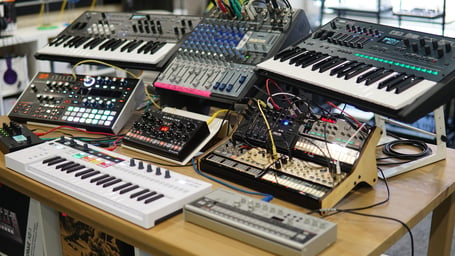Greetings, fellow music producers and audio enthusiasts! Today, we embark on a journey into the heart of music production, where we unravel the secrets of one of the most essential tools in the arsenal of every producer: Compression. If you've ever wondered how to achieve that polished and professional sound in your tracks, then mastering the art of compression is your answer.

Understanding Compression
Compression is a dynamic audio processing technique that helps control the volume and dynamic range of a sound source. By attenuating the louder parts and boosting the quieter sections, compression ensures a more consistent and balanced audio signal, resulting in a smoother and more refined sound.
The Compressor Controls
To harness the power of compression effectively, understanding the key controls of a compressor is crucial:
Threshold: This sets the level at which the compression starts to take effect. Any audio above the threshold will be compressed.
Ratio: The ratio determines the degree of compression applied. For example, a 2:1 ratio means that for every 2 dB the input signal goes above the threshold, the output will only increase by 1 dB.
Attack: The attack time specifies how quickly the compressor responds once the audio crosses the threshold.
Release: The release time defines how long it takes for the compressor to stop attenuating the audio once it falls below the threshold.
Makeup Gain: After compression, the output level may be reduced. Makeup gain compensates for this loss and boosts the overall output level.

Common Uses of Compression
Taming Dynamic Vocals: Compression is frequently used to control the dynamic range of vocal performances, making them sit more consistently in the mix.
Gluing Elements Together: By applying gentle compression to multiple tracks, such as drums or backing vocals, you can "glue" them together, creating a more cohesive and unified sound.
Enhancing Drum Impact: Compressing drum tracks can add punch and impact to the overall rhythm section, making the drums stand out in the mix.
Parallel Compression
Parallel compression, also known as New York compression, is a technique that involves blending the compressed and uncompressed signals of a track. This method retains the dynamics of the original sound while adding the benefits of compression, resulting in a rich and textured audio output.

Avoiding Overcompression
While compression is a powerful tool, overusing it can lead to undesirable artifacts, such as pumping or a loss of natural dynamics. It's essential to use compression judiciously and to trust your ears when making adjustments.
Conclusion
Congratulations! You've now unlocked the secrets of compression, a fundamental tool in the world of music production. By skillfully applying compression to your tracks, you can achieve that professional sheen and take your productions to new heights. Remember, experimentation, careful listening, and understanding the intricacies of compression will be the keys to mastering this essential technique.
So, venture forth with confidence, embrace the world of compression, and let your music productions shine like never before!
















_Cropped.png?width=1600&name=02%20(2)_Cropped.png)




















Your Comments :